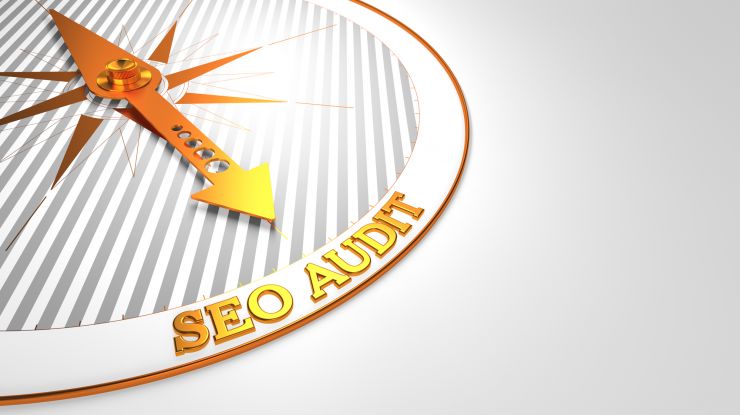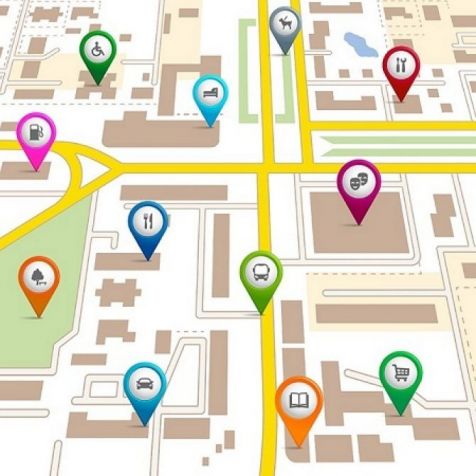How to Guides: Search Engine Optimisation
How to Optimize Google My Business Listings?
Oct 22, 2018
What is Google My Business Listings?
Google My Business is a free and easy tool for business local listing in Google Maps.

An SEO link audit is a comprehensive analysis that allows us to emphasise on link building and detect problems in terms of backlinks. Similar to any other onsite SEO audit, link audits are an important part of the offsite SEO process. Link audits include various link building components comprising the overall link audit process. Some of the components are backlink analysis, competitors’ backlink analysis, anchor text analysis, broken link building strategy, guest posting, link relevancy, and site-wide distribution.
This SEO methodology checks all the internal and external links for the website. Links help in ranking your keywords in search engines. High quality, authoritative related links help in boosting website’s overall rank. Regular link audits are required to keep a website clean and aids in getting rid of problematic and unnatural links.
1. Create a profound strategy for Link Audit : You must know why you are carrying out this link audit in the first place.
Did you receive a manual penalty from Google?
Has your website traffic dropped after an update?
Or, are you planning for a website health-check to remove unnatural links to mitigate risk?
2. If, we are doing link cleansing we would gather backlinks from various tools such as search console, ahrefs, moz link explorer.
In case, you are looking for building more links, the top competitors would be reviewed based on target link and target keywords and the following steps shall be considered:
Since the focus is upon link cleansing, gather the backlinks from various tools such as Google search console, ahrefs, moz link explorer and check the quality of links based on the standard quality parameters and ensure the elimination of unnatural links.
The worst time to conduct a link audit is when you are obliged to. You need not wait for a Penguin update for your rankings to get wiped out in the SERPs or an ‘unnatural links’ warning to hit your inbox. Perform a link audit right away.
A comprehensive link audit is crucial in developing any digital marketing plan. Link building is the most effective way to boost traffic via rankings. Google imposes Manual Link Spam penalties whenever backlinks tend to manipulate.
If the fundamental objective is to recover from a penalty, focus on Google Search console (Google Webmaster Tools) and areas that fall outside the webmaster guidelines or ‘link schemes’. If a program for a new website is being developed, the data will be used to find opportunities. If there is a competitor outranking your website, the data will be used to neutralize the competitive advantages and to find opportunities.
After auditing, some links are identified as natural links, unnatural links, nofollow links, dofollow links, and spam links. The auditing helps to remove spam links and prevents from submitting links in spam websites.
The mechanism of natural link building procures links by creating the highest-quality content like blogs, articles, images, videos, infographics, etc. Good content convinces marketers to share links that add value to the page and to the website, you neither have to force nor advertise it. Marketers who willingly share the content and provide backlink benefit both the owner’s website as well as the shared website.
Unnatural links are links that weren’t editorially placed by the site’s owner on a page and can be considered a violation of Google’s guidelines. Google specifically categorizes unnatural links as text advertisements that pass PageRank, links with optimized anchor text in articles or press releases distributed on other sites, forum comments with links, widely distributed links in the footers or templates of various sites, and low-quality directory or bookmark site links.
A nofollow link does not count as a point in the page’s favour, does not boost the PageRank, and doesn’t help a page’s placement in the search engine result pages (SERPs). A nofollow tag is basically a notice sign for search engines indicating something that is not to be counted.
Dofollow links allow all search engines to follow them and reach a particular website. If a webmaster links back to you, search engines will be able to follow you back. The best way to provide someone a dofollow link is by allowing keywords in the anchor text. This means when you are linking to any website or page, use the targeted keyword as anchor text.
The links which are inserted into a website with the intent of manipulating search engine result pages are called spam links. The higher placement of the target website in the search results is because of the inbound links a site receives. Spam links are typically inserted into the database content in plain text and inserted into site files.
Spam links may be related to any number of search niches including pharmaceutical sales, essay writing sites, ringtones and music downloads, movie downloads, online casino or gambling, fraudulent/replica designer sales, weight loss supplements or products, and adult content.
How do you find out which Links have to be Removed when an ‘Unnatural Links’ Message is Received?
Having access to Google Webmaster Tools and Google Analytics is purposeful but not mandatory. If you aim to recover from a penalty, then access to GWT and GA is mandatory. Clients have the option of providing limited administrative access to a third party.
If you don’t already have a GWT account, make one by signing up, add the code to your site, and validate the website. Then select your site, select traffic and links to your site, download the latest links, and export to .CSV or Google Docs.
Gathering the GWT data is crucial while looking to recover from a penalty. The fault mostly lies in the links acquired around the date of penalty. Therefore, every link that falls outside of the webmaster guidelines must be cleaned up via link removal or the disavow tool.
Links that appear on a domain that isn’t indexed on Google Links need to be reviewed and considered for removal. This is an indication of a quality problem. Run a site command to test for this. If the website is indexed, you will see a different result as compared to when a website isn’t indexed. At times, even a perfectly good site isn’t indexed because of a bad robots.txt. This usually happens when a website leaves the development stage but the robots.txt isn’t changed to allow the search engines to crawl the site which is why a manual review is important. Links that appear on a website with a malware or virus warning also need to be considered for renewal.
Contemplate the links coming from link networks. Link networks are a group of websites with common registrars, common IPs, common DNS, common analytics, and common affiliate code. If a group of websites share a common IP, chances are that you will also find some of the other characteristics of a link network.
Paid links are no exception. If you are attempting to recover from a manual penalty, every paid link must be eliminated. The Google spam team roots out paid links. Beyond specific link types which could be considered suspicious, there are new link rules that need to be reviewed and shall be abided by in a Post Penguin era.
Every website should conduct a regular link audit based on the size of the project and its age. It can be scheduled to ensure that bad links are removed, good links can be focussed upon for generating more links, especially from websites where your competitors gain links to build website authority.


How to Guides: Search Engine Optimisation
Oct 22, 2018
What is Google My Business Listings?
Google My Business is a free and easy tool for business local listing in Google Maps.


How to Guides: Search Engine Optimisation
Oct 08, 2018
What is Google Search Console?It is a service provided by Google that helps you to maintain and keep track of your site's presence in Google Search...